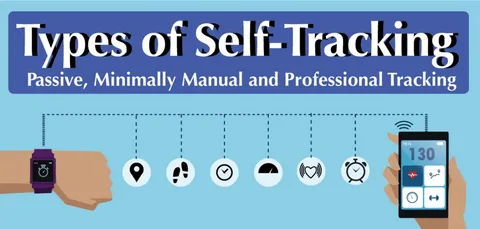Running a Track Your Business is an adventure full of ups and downs. When I first started mine, managing expenses felt like juggling with my eyes closed. Money slipped through cracks, and I had no clue where it was all going. Eventually, I discovered how to track business expenses easily in 2025—and that discovery transformed everything. Whether you’re a new entrepreneur or have been at it for a while, learning this skill will save you headaches and help your business grow smarter.
Why Keeping Track of Business Expenses Matters
Imagine driving a car without a dashboard. You wouldn’t know when to refuel or how fast you’re going. Managing a business without tracking expenses is much like that—dangerous and confusing. Tracking your expenses helps you understand your spending habits clearly. It lets you spot areas where you can save, avoid surprises, and get ready for tax season with confidence.
Today, in 2025, expenses can pile up quickly if you don’t keep an eye on them. Inflation, new fees, and changing business costs make it more important than ever to know exactly where your money goes. Once I started tracking, I realized some monthly bills I had forgotten to cancel. Catching those saved me hundreds each year.
How I Went from Paper Chaos to Organized Tracking
At the start, I kept all my receipts stuffed in a shoebox. I thought that was enough. But as the months passed, sorting through that box became a nightmare. To bring order to the chaos, I began jotting down every business purchase in a small notebook. This included everything: fuel, office supplies, website hosting fees—you name it.
That notebook quickly filled up, so I switched to a digital spreadsheet. Google Sheets was my tool of choice because it’s free and easy to use from anywhere. My spreadsheet tracked four things: the date, what I bought, how much it cost, and why I needed it. I updated it weekly, and it became a habit I didn’t want to break.
Manual vs App-Based Tracking: Finding What Works for You

Tracking expenses manually like I did has its benefits. It forces you to stay aware of every penny spent. However, in 2025, apps have made this process much easier for many business owners. Apps like QuickBooks, Expensify, and Wave can link directly to your bank account, automatically recording expenses as they happen.
When I tried these apps, the difference was clear. No more forgetting to enter expenses or losing receipts. Plus, most apps allow you to snap photos of receipts and attach them instantly. This blend of automation and organization saves time and reduces errors.
If you prefer full control, manual tracking with spreadsheets works well. But for busy entrepreneurs, using top expense tracking apps can be a game changer. Some people even use a mix—tracking large expenses manually and letting apps handle day-to-day spending.
Setting Up a Spreadsheet for Expense Tracking
Starting your own expense spreadsheet isn’t as tricky as it sounds. Begin by creating columns labeled Date, Expense Description, Amount, and Category. You can customize categories like Marketing, Travel, Office Supplies, Software, or Meals depending on your business needs.
After entering expenses, use spreadsheet features like sorting and filtering to review spending trends. For example, you might find you’re spending too much on office snacks! Seeing this in black and white helps you decide where to cut costs.
Organizing Receipts Without Losing Your Mind
Paper receipts can vanish if you’re not careful. Instead of letting them pile up, I recommend digitizing every receipt as soon as possible. Taking a quick photo with your smartphone and uploading it to cloud storage like Google Drive or Dropbox keeps your records safe and easy to find.
Organizing receipts by month or category makes retrieval simple when you need to review or submit expenses. Many apps can even do this for you automatically, so you don’t have to worry about filing.
Understanding Business Expense Categories
Dividing expenses into categories might sound boring, but it’s one of the smartest things you can do. This simple step helps you understand where your money is going and makes tax time less stressful. The IRS requires detailed records by category, so doing it all year saves you headaches later.
Common categories include marketing costs, travel expenses, office supplies, meals, software subscriptions, and professional services. Think about what you spend money on regularly, then assign each purchase to the correct group.
Regularly Reviewing Your Expenses Pays Off
Every month, I spend about 20 minutes reviewing my expenses. This routine helps me spot mistakes, cancel unused subscriptions, and plan smarter budgets. Reviewing your expenses like this isn’t a chore—it’s an investment in your business’s health.
Sometimes I discover small leaks, like a service I forgot to cancel or recurring fees I no longer need. Fixing these saves money I can reinvest elsewhere.
Starting to Track Expenses as a New Business Owner
If you’re just beginning, tracking expenses might feel overwhelming. My advice? Start small. Grab a notebook or open a simple spreadsheet. Record every purchase—even if it’s a small coffee for a client meeting. The goal is to build a habit, not to be perfect from day one.
Once you’re comfortable, explore apps that fit your budget and business size. Many apps offer free plans, so you can test what works best without spending money upfront.
FAQs About Tracking Business Expenses Easily in 2025
What’s the best way to track business expenses today?
Using an app like QuickBooks or Wave is the easiest and most efficient method, especially since these apps sync with your bank and automate much of the process.
Is it necessary to keep paper receipts?
Physical receipts are less important now that digital copies are accepted. Just make sure your digital scans are clear and stored securely.
Can I mix personal and business expenses in one bank account?
It’s better to keep separate accounts. This separation simplifies tracking and looks more professional when filing taxes or applying for loans.
How often should I update my expense records?
Weekly updates keep things manageable. If that’s too much, do a thorough review at least once a month.
Are spreadsheets or apps better for beginners?
Spreadsheets give you full control but require discipline. Apps are faster and automate many tasks, making them ideal for busy entrepreneurs.
What types of expenses should I track?
Track anything related to running or growing your business—office supplies, advertising, travel, software subscriptions, and even meals connected to work.
What risks do I face if I don’t track expenses well?
Poor tracking can lead to overspending, missed tax deductions, and stressful audits.
Can I manage expense tracking entirely on my phone?
Yes. Most apps are mobile-friendly, allowing you to add expenses and scan receipts anywhere.
Conclusion: Take Control of Your Business Finances in 2025
Mastering how to track your business expenses easily in 2025 transforms your business from chaos to control. Whether you prefer writing things down or letting technology handle the details, the key is consistency. Start tracking today, keep your records organized, and review your spending regularly.
You’ll be surprised how much clearer your financial picture becomes—and how much easier tax time feels. From one business owner to another: if I can do it, so can you. The sooner you start, the better your business will grow.



